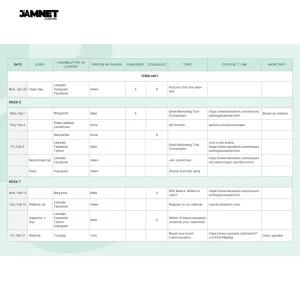Every social media plan is built around the production of social media content. There is nothing to publish, like, share, or analyze if there is no content — and it is impossible to market goods or services online if there is no content.
Content creation for social media can range from writing a catchy comment to planning a large constructed social campaign with extensive staff and numerous personalities.
For either of these choices or anything in between, you’ll need a content marketing plan and content creation tools and resources to get the job done right. We’ll walk you through it all in this article.
Social Media: 2023 Content Creation Roadmap:
What exactly is content creation?


Content creation is the process involved in creating content. But what precisely does this mean?
Blog postings, TikToks, whitepapers, and even books can all be considered information. Content is defined as anything that offers knowledge or entertainment. Content creation is an essential method for marketers and brands to establish and sustain relationships with prospective consumers.
Let’s take a look at all of the possible components that could be involved in transforming your thoughts into written content for social media in particular.
What exactly is social media content creation?
The process for generating written content material, photos, images, and videos for various social media networks is known as social media content development.
Social media material must adhere to strict character limits, picture sizes, and video durations. You must squeeze a lot of worth into a tiny amount of room.
It’s also worth noting that social media content production is significantly more participatory than other types of content creation. You don’t make material in a vacuum. You are part of a broader community whether you are highlighting user-generated content, making a TikTok Stitches, or using trending audio to direct your content ideas.
Some of the components involved in the making of social media content include;
Research: entails keeping up with the latest social media trends and utilizing social listening and social media statistics to determine what type of material your social community prefers.
Writing: Putting words on the screen, ranging from titles and video overlay text to content for lengthier Facebook or LinkedIn entries.
Photographing and/or filming: photographs and/or video clips, such as merchandise shots or behind-the-scenes visits. This may require expert equipment, but based on your requirements, it can also be accomplished with a smartphone.
Video editing: is the process of combining clips to create a final output.
Graphic design is the process of combining words and images to create a meme, illustration, highlight cover, or other picture for use on social media.
8-step method for creating social media content


- Conduct research
- Establish objectives
- Hold an innovative brainstorming session
- Assign responsibilities
- Create a content schedule
- Plan out your contents
- Create a content collection
- Evaluate your findings
Conduct research


Any effective procedure begins with a study. Yes, everything is content, but that doesn’t mean you can just share whatever you want on social media and call it a day.
Before you begin creating content, you must first determine what type of content connects with your community or prospective target group.
If you presently have a sizable presence on social media, you can begin with social media statistics. These will assist you in understanding what is already working for you so that you can replicate your achievement.
However, social trends change quickly, so you can’t restrict your study to your own profiles. Social listening is an excellent method to learn about what’s going on in your industry and what people are saying about your company on social media.
Finally, pay attention to popular hashtags, subjects, and audio. You may not want to follow every trend that emerges, but you will notice some excellent digital content production ideas that could assist your content to attain greater engagement and reach.
Establish objectives


With a better understanding of what’s going on in your business, you can begin to establish certain objectives for your social media posts. Are you attempting to get folks to visit your blog? How can you increase your following? Make revenue using social media? Perhaps all of the above?
The type of content you produce will differ depending on your goals. For example, your call to action for a sales post will be very different from one intended to increase company recognition and engagement.
It’s a good notion to use the SMART goal-setting strategy to get precise with your objectives. This compels you to consider what you can accomplish with your social material and how you might get there.
Hold an innovative brainstorming session


Take some time to get some ideas on the blackboard, whether you’re a one-person business or have a big social staff. (It doesn’t matter whether the real whiteboard is literal or metaphorical, just that you collect all of your thoughts in one spot).
This is the “no bad ideas” period. Everyone on your team has had their own personal and business experiences with social media, which will influence their content ideas and standards. Allowing everyone to openly share brings all of that knowledge into your collective brain trust, where it can evolve into high-quality social content initiatives.
Assign responsibilities
Remember all of the above-mentioned components of social media content creation? If you haven’t already assigned team members to each of those duties, now is the moment.
It’s also necessary to establish a sound social media approval procedure so that everyone knows how their work fits into the bigger image and how their deadlines affect the rest of the team.
You may not have anyone to assign responsibilities to if you own a small company. Don’t be alarmed! Keep in mind that everything is substance. You can certainly begin by producing all of your material on your own. It doesn’t have to be complex or time-consuming.
Even big teams do not have to do everything. This is an excellent opportunity to consider whether you want to delegate some digital content production duties to freelance authors or designers. Consider how to acquire and integrate user-generated content, as well as how to incorporate curated content into your social media marketing plan.
Finally, consider whether you want to collaborate with external content producers, also known as influencers. This could be for a one-time effort or a long-term partnership.
Create a content schedule


A social media content schedule enables you to plan your content blend across social networks so that your digital content production efforts are as effective as possible.
Read Also: 13-common Facebook Ad beginner mistakes that will kill your marketing budget
Plan out your contents
After you’ve completed your content schedule, it’s time to prepare your content for publication. Sure, you could physically publish each article at the allotted time, but that’s an enormous time waste that also exposes you to simple errors like typos and broken links.
Scheduling content ahead of time provides you with a real-time perspective of your content strategy and enables you to double-check all of the specifics. It also streamlines your productivity by condensing the time you spend posting content into a single period, rather than interrupting your work throughout the day.
Create a content collection
There’s no need to start from zero with every piece of social content. You’ll appreciate yourself for having the forethought to build a content library on your busiest days.
Any effective social media post can be used to create a blueprint for future posts. You can also include authorized images in your content collection, whether they were produced in-house or obtained from a royalty-free source.
You’ll have more choices for producing new social content without reinventing the wheel as your content library expands.
Evaluate your findings
The material creation procedure concludes where it began. Analyze your outcomes to see what worked and what didn’t, and use your insights to direct your future study and planning.
Set fresh objectives and repeat the process.













